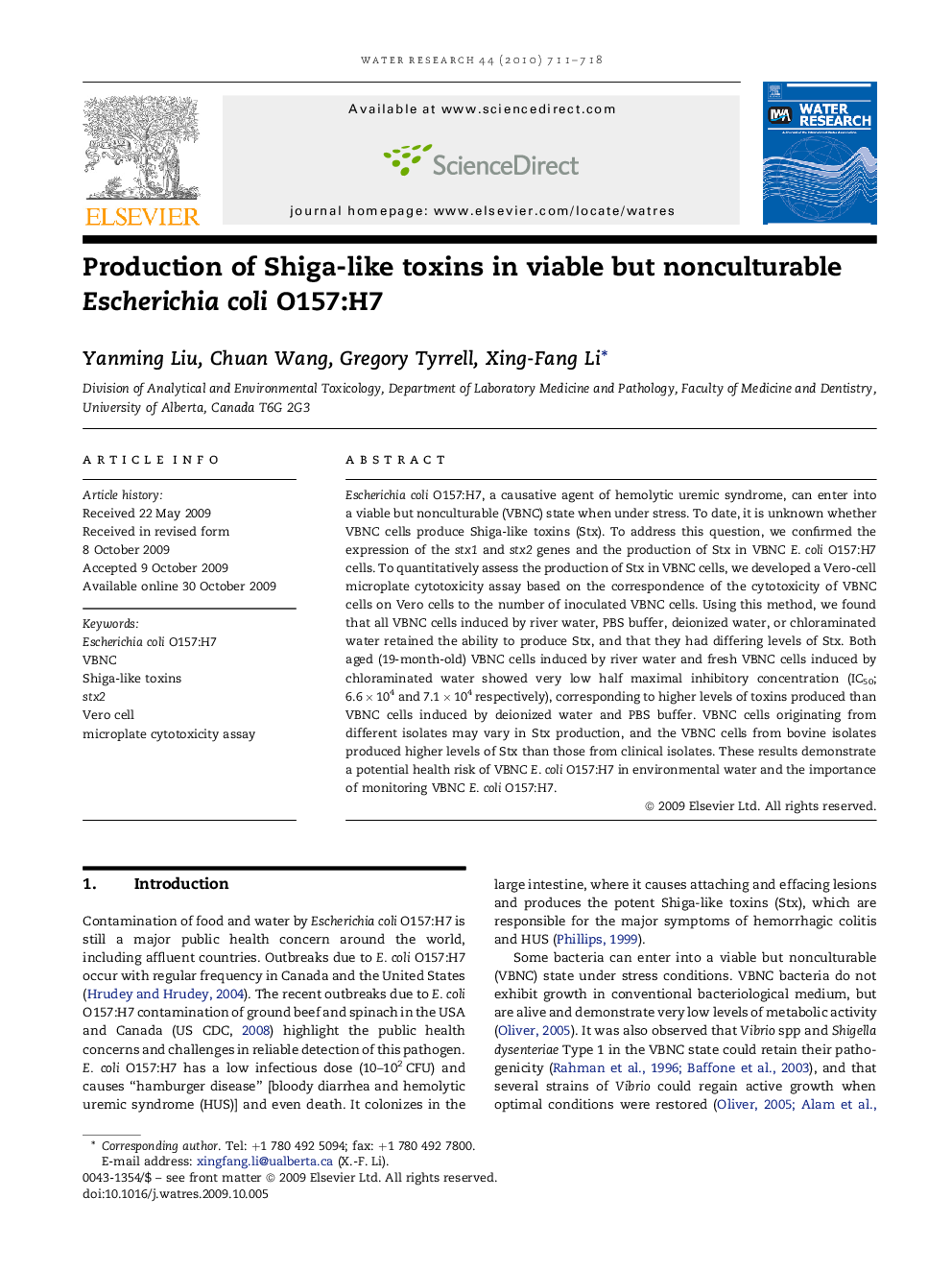| Article ID | Journal | Published Year | Pages | File Type |
|---|---|---|---|---|
| 4482627 | Water Research | 2010 | 8 Pages |
Escherichia coli O157:H7, a causative agent of hemolytic uremic syndrome, can enter into a viable but nonculturable (VBNC) state when under stress. To date, it is unknown whether VBNC cells produce Shiga-like toxins (Stx). To address this question, we confirmed the expression of the stx1 and stx2 genes and the production of Stx in VBNC E. coli O157:H7 cells. To quantitatively assess the production of Stx in VBNC cells, we developed a Vero-cell microplate cytotoxicity assay based on the correspondence of the cytotoxicity of VBNC cells on Vero cells to the number of inoculated VBNC cells. Using this method, we found that all VBNC cells induced by river water, PBS buffer, deionized water, or chloraminated water retained the ability to produce Stx, and that they had differing levels of Stx. Both aged (19-month-old) VBNC cells induced by river water and fresh VBNC cells induced by chloraminated water showed very low half maximal inhibitory concentration (IC50; 6.6 × 104 and 7.1 × 104 respectively), corresponding to higher levels of toxins produced than VBNC cells induced by deionized water and PBS buffer. VBNC cells originating from different isolates may vary in Stx production, and the VBNC cells from bovine isolates produced higher levels of Stx than those from clinical isolates. These results demonstrate a potential health risk of VBNC E. coli O157:H7 in environmental water and the importance of monitoring VBNC E. coli O157:H7.
